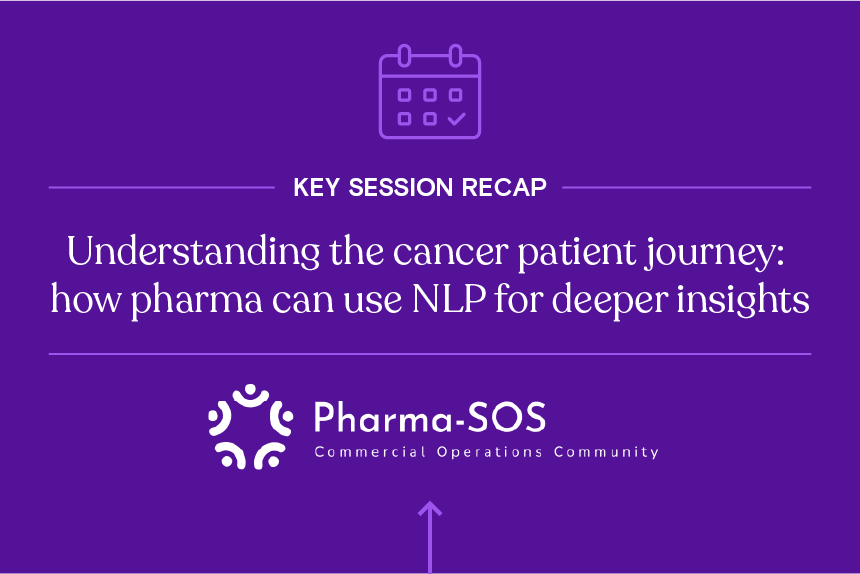Whether you’re planning your biopharmaceutical or medical device marketing strategy for the year ahead or revisiting your methods mid-year, it’s never a bad time to evaluate your marketing plan.
Keep these four life science marketing tips in mind as you consider your approach:
1. Evaluate your marketing channels
In the modern, fast-paced world, you cannot make smart, informed decisions without objectively evaluating what worked and what didn’t.
Data and analytics should play a critical role in helping you understand the performance of each and every marketing channel you leverage in your biopharma marketing mix. This will help set the foundation for any work you want to do going forward.
Definitive Healthcare is just one tool you can use to help evaluate the effectiveness of your marketing channels. For example, by leveraging the Atlas All-Payor & Prescription Claims datasets, you can gain valuable insights on market share gains or losses for your treatment area.
When you couple our data with more traditional sources of marketing data, such as insights from the sales pipeline, marketing funnel, website performance, and campaign click-throughs, you can gain a better view of what campaigns were most effective, what messages resonated most, and what channels are best suited to increase or sustain gains made in the last year or recent months.
While COVID concerns continue to subside, don’t plan to rely solely on face-to-face marketing programs. Marketers should make sure contact data—such as email addresses and LinkedIn profiles—for targets is accurate and up to date.
Doing this groundwork now will help you maximize your digital outreach and campaigns to be more effective in the months and years ahead.
2. Gather competitive insights
After you’ve evaluated the effectiveness of your marketing channels, you’ll want to turn to your competitors. Understanding what your competitors are doing is a cornerstone to any good marketing strategy.
Claims data can provide valuable insights to biopharma marketers as they look to understand their competitor’s performance in the marketplace. With claims data, you can look at specific therapeutic areas to identify changes in market share and uncover moves competitors are making in those areas.
If you couple claims data with physician and hospital data, you can gain an even better understanding of the competitor landscape. With claims and physician data, you can see what providers are prescribing competitors’ treatments. Claims and hospital data provide insight into what facilities have relationships with competitors. These insights can help you maintain your market share or help you devise strategies to combat negative changes based on the competitive landscape.
Besides looking at competitor market share, be sure to check out what messaging and channels others are using in their outreach. There are always opportunities to capitalize on a space a competitor is not in or finetune your message to present a stronger use case for your therapy or device.
3. Personalize the messaging in your campaign
Personalization is not a nice-to-have. It’s a need to have in our digital era. If you’re not personalizing your biopharma marketing campaigns, you can bet your competition is.
You need to put yourself in the shoes of those you’re trying to reach and influence. Relevant data is king here, but you need to extract valuable intelligence from the data to identify trends and speak to the questions decision-makers could ask. This becomes even more important in competitive therapeutic areas.
As you begin to outline your campaigns for next year, think about marketing to a segment of one.
By leveraging our healthcare commercial intelligence, we can help you identify the market context, along with the market contacts that you need to tailor your message to each segment and audience.
Claims data, once again, can be beneficial here for marketers. By leveraging the Atlas All-Payor & Prescription Claims datasets, you can better understand a physician’s specialty, their patient populations, their prescribing habits, and their most frequent procedures and diagnoses. This can help you tailor your messaging to highlight how your therapy area can improve patient outcomes.
Affiliations data can also help you refine your messaging by providing insights into physicians’ relationships with specific organizations and the history and strength of that relationship. Coupling that data with insights on an organization’s org chart can help you understand who the key decision-makers are and reach the right contacts with the right message.
4. Don’t be afraid to try something new
It can be tough to get creative with your marketing strategy in the highly regulated life sciences field. However, there is still room to try new tactics with your marketing campaigns.
One way to get creative is to consider developing new patient-centric marketing programs.
Patient education to aid with medication adherence is increasingly crucial for pharmaceutical companies. Nonadherence can directly impact patient outcomes. According to a report in U.S. Pharmacist, nonadherence can account for up to 50% of treatment failures, around 125,000 deaths, and up to 25% of hospitalizations each year in the United States.
Drug costs are frequently cited as a barrier to medication adherence. If your biopharma company offers patient financial assistance, try building campaigns to raise awareness of the financial support you offer to aid with adherence.
By cross-referencing physician data with CBSA data or zip codes of lower-income communities, you can build awareness campaigns targeting physicians whose patient populations could benefit the most from financial assistance programs.
By focusing on patient-centric campaigns, you can get a bit more creative with your messaging and marketing while also highlighting the benefits of your therapy and improving patient outcomes.
Learn more
Pulling together a marketing strategy might not be the easiest thing, given all the uncertainties and moving parts involved.
But armed with data to drive informed decision-making, you can move the needle on your go-to-market strategy to get your treatment or device to the patients who need it most.
Definitive Healthcare can take the guesswork out of your marketing planning and execution with healthcare commercial intelligence.
Sign up for a free trial or demo today to see how Definitive Healthcare can help your biopharmaceutical or medical device marketing strategy.





